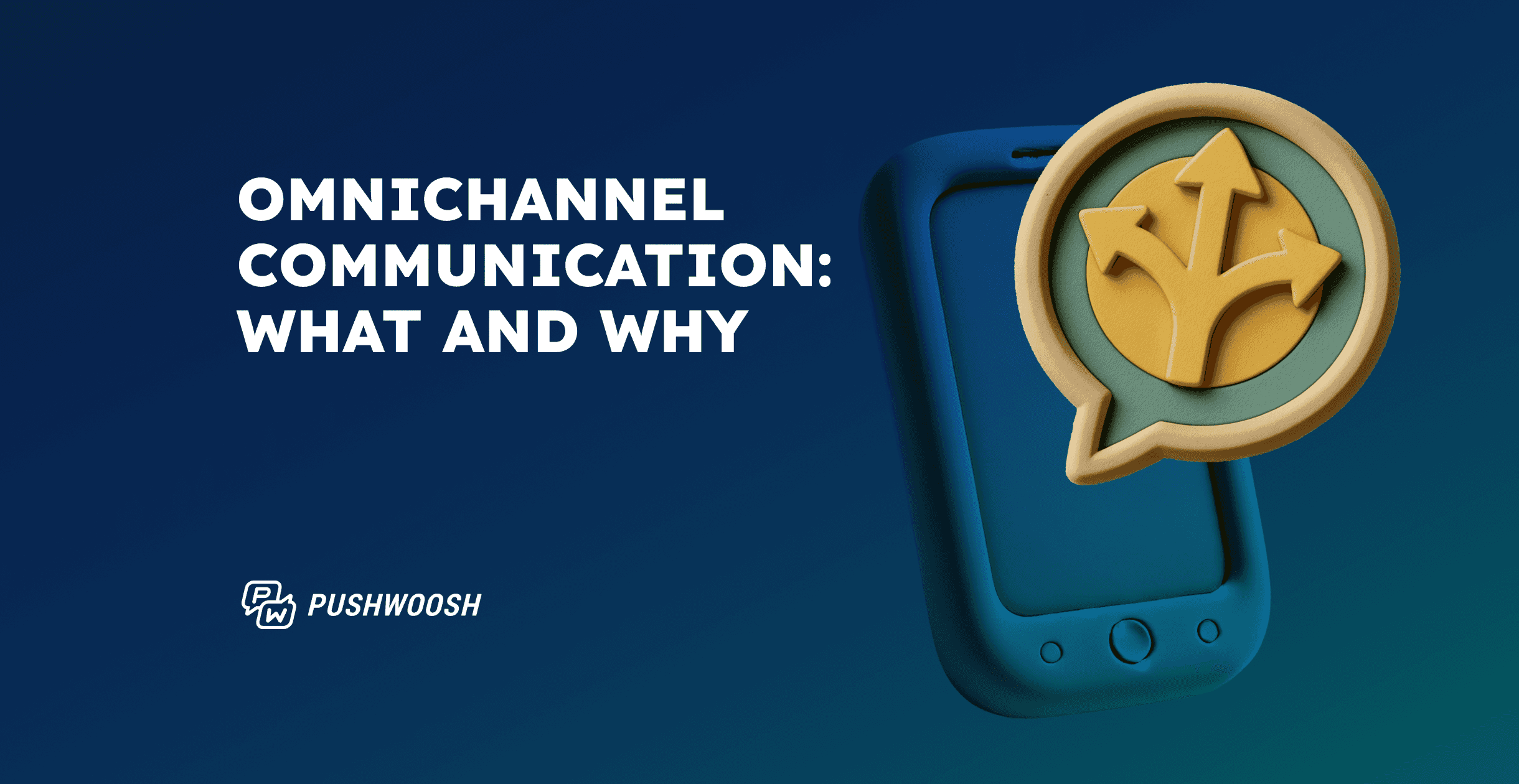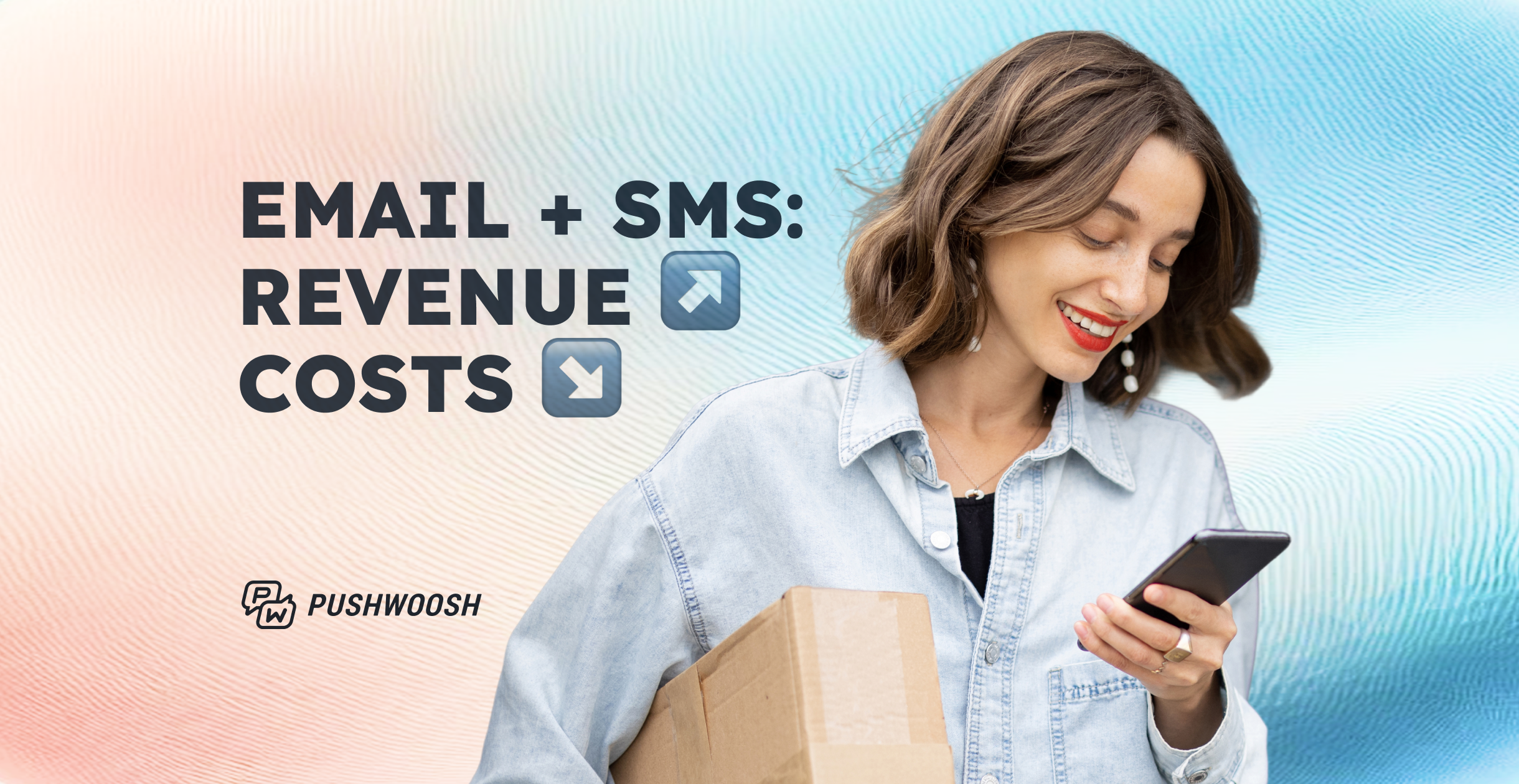Emails + push notifications: improve your marketing strategy
Most marketers understand the importance of email campaigns, but many don’t know that combining them with push notifications can multiply conversions and revenue. Nowadays, the competition for your users’ attention is tough: multiple brands send them emails every day. That’s why, in order to have your messages read, your marketing communications have to be omnichannel.
Strengths & limitations of emails
To build effective customer communications, you have to understand the strengths and weaknesses that communication channels have. With that understanding, you can then craft campaigns that work to amplify the strengths and diminish the weaknesses.
Email remains a very popular way to interact with customers. It’s not surprising; there are over 4.48 billion email users in the world. However, when communicating via email, it’s possible to stumble upon such issues as:
- Being marked as spam: getting into the Spam tab of your users’ inbox is easy. Such emails are less likely to be seen (very few people check the Spam tab), which means lower open rates and fewer clicks and conversions.
- Undelivered emails: bounces are very common. Determining the reason why your email hasn’t been delivered can be difficult.
A soft bounce might occur because the recipient’s mailbox is full, the server is down or swamped with messages, or the message is too large.
A hard bounce means an email has been returned by the recipient’s mail server as permanently undeliverable. This can be caused by invalid addresses (domain name doesn’t exist, typos, changed address, etc.).
- Getting lost among other messages: sometimes users’ inboxes can get really full. Not all people take time to study the received content, choosing to take a quick glance instead, and reading only the most important. That’s how your messages can easily get ignored.
Besides, it’s important to remember that the average amount of time it takes for a user to view an email is nearly six and a half hours. If you have a time-sensitive message, that won’t work for you. That’s when push notifications are a better solution: they’re delivered instantly to a user’s desktop or mobile device.
Strengths & limitations of push notifications
While push notifications shine when it comes to delivering instant, attention-grabbing messages, they have some limitations, for example, constraints on message length and others. Here’s a look at the main benefits and drawbacks.
✅ Instant engagement
Push notifications deliver real-time updates directly to users’ screens, leading to immediate visibility and quick interaction.
✅ Higher open rates
Push notifications show higher open rates compared to emails due to their placement and urgency.
✅ Prompting to take a quick action
With concise, action-oriented messages, push notifications are ideal for driving instant responses, such as for flash sales, reminders, or urgent updates.
🔴 Short-form content
The short format of push notifications limits the content that can be delivered, making it difficult to convey detailed information.
🔴 Potential intrusiveness
Frequent, poorly timed, or irrelevant notifications can be perceived as intrusive, leading to user frustration or opt-outs.
💡Learn more about how to effectively segment your audience to send only relevant push notifications
What to prefer emails for
While push notifications are great for quick updates and immediate responses, emails offer advantages in scenarios where detailed or comprehensive communication is required.
Emails allow for richer content, making them the ideal choice for campaigns that involve in-depth information, onboarding guides, personalized offers, and transactional records.
Here are some key cases where opting for email is more effective.
Detailed information
Opt for emails when you need to deliver more comprehensive information, such as newsletters, long-form content, or detailed product updates. Emails provide the space and format that let users easily access and review the content whenever they like.
Onboarding and educational content
Emails are perfect for onboarding and educational purposes—such as helping new users explore app features, offering tutorials, or sharing tips and best practices. Their structured format makes it easy for users to follow along and grasp the material at their own pace.
Promos with multimedia content
For promotional campaigns with multimedia content—like thematic catalogs or collection announcements—emails are the ideal medium. They enable you to present eye-catching visuals in a format that engages users and drives their interaction with your offers.
Transactional records
Emails are essential for maintaining records of transactions, order confirmations, subscription renewals, and account changes. They offer users a permanent, easily accessible copy of important information.
Compliance and documentation
Emails are essential for sending compliance communications, such as legally required notices and privacy policy updates. They ensure that users receive important legal and regulatory information, keeping them informed about their rights and any changes to terms and conditions.
💡Learn more about how to personalize your email campaigns based on user preferences and past behaviors
What to prefer push notifications for
Whether you need to deliver time-sensitive updates or drive continuous engagement, push notifications often outshine emails in their effectiveness. They offer immediacy and relevance that can significantly impact conversion rates.
Time-sensitive news and updates
For the latest sports scores, breaking headlines, or location-based alerts, push notifications offer an immediate and effective way to keep your audience in the loop. This real-time communication ensures users are always up-to-date with the most relevant information.
Immediate sales or actions
Use push notifications to promote a flash sale or new feature and watch your conversion rates rise. By creating a sense of urgency, push notifications effectively prompt users to complete purchases or engage with new offers.
Transactional alerts
When a transaction is completed, push notifications provide a swift confirmation, letting users know their purchase went through, their shipment is on its way, or their payment has been processed. This helps you benefit by building trust and boosting user satisfaction.
Behavior-based communications
Leverage push notifications to tailor messages based on user behavior. Remind users of unfinished tasks, encourage them to complete their profiles, increasing conversions to a targeted action.
Engagement and retention
To spark user engagement and retention, push notifications are invaluable. They serve as timely nudges to remind users to check in for daily rewards, explore new content, or interact with your app.
💡Discover how push notifications can be a game-changer for boosting user retention
Strengthen your strategy with emails + push notifications combined
Emails + push notifications is the combination that our customers love to use the most.It allows reachingthe users who ignored emails via short and hard-to-ignore push messages. Such notifications can also be automated and personalized, so you can be sure they are always timely and relevant.
👍 Push notifications can not be marked as spam, and they are much harder to ignore, because they pop up on users’ screens, inevitably drawing their attention.
Besides, you can be sure there won’t be any delivery issues, like the ones that can occur with emails.
If you need to deliver any type of limited-time offer, notify your users you’re hosting a live stream or a webinar, or deliver breaking news, push notifications are perfect. Sending a series of emails in advance to get people to register and to alert them is great. But, come the time of the event, sending a push notification will be much more helpful. It is this combination of messaging channels that will help ensure greater success.
How to send emails + push notifications in a campaign
One of the most useful tools that allows building email + push notifications campaigns, isPushwoosh Customer Journey Builder. It’s a visual drag-and-drop campaign builder that creates chains of push notifications and emails that get launched by a user’s actions.
With Customer Journey, you can build automated behavior-based message flows that ensure you’re giving each user a cohesive, relevant experience. Such messages make the strongest impact and bring the most conversions due to their relevance and timeliness.
For example, let’s say you want to greet your new users with an email that contains a special offer. If they ignore your message (or if they open your email, but don’t use the offer) you can wait for some time (you specify the delay) and send them a push notification that will once again remind them about you. If they read the message and perform the required action, you can continue onboarding them by delivering a series of messages that contain instructions, tips, and best practices on how to use your app or website via emails and push notifications.
Explore what email features are available in Pushwoosh:
Or try Pushwoosh features without delay:




